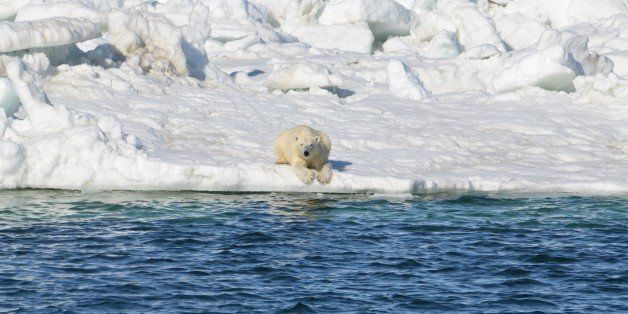
Polar bears need sea ice in order to hunt for seals and other food in the ocean. But climate change is taking that away from them.
The bears are spending more and more time on land, but there is not enough food there to truly sustain them, according to a study published Wednesday in the journal Frontiers in Ecology and the Environment.
Researchers with the U.S. Geological Survey, Washington State University and conservation group Polar Bears International conducted a first-of-its-kind review of terrestrial Arctic ecosystems' ability to support polar bear populations with enough of the energy-dense food they need.
The results are grim.
“There simply isn’t enough food to feed polar bears on land," study co-author and Polar Bears International chief scientist Steven Amstrup told The Huffington Post.
Several earlier studies of Arctic animals have observed polar bears consuming land-based foods, like geese and their eggs. But this evidence is “absolutely” anecdotal, Amstrup said.
He explained that there have only been about 30 observations of polar bear populations eating on land, among 20,000 to 25,000 bears. Arctic bird eggs are more nourishing than most land-based foods available to the bears, but they are too limited in quantity to sustain entire populations.
Previous terrestrial feeding stories are “really simply a distraction from the threat of climate change and melting sea ice," Amstrup told HuffPost.
The researchers wrote that more quantitative studies are needed on polar bear feeding habits and nutrition. But, they wrote, "available data do not support the conclusion that polar bears can replace lost access to marine-mammal resources with terrestrially derived foods."
Amstrup says he definitely sees hope for the future, "if we mitigate the rise of greenhouse gas emissions." A continued decline in polar bear populations is likely inevitable, as the heat-trapping emissions humans are releasing now will remain for some time and continue to melt the Arctic. But "we could save substantial [polar bear] habitat," Amstrup said, if "we get our act together." Arctic sea ice could begin to stabilize in several decades if emissions are reduced, he explained.
Amstrup and others showed in a 2010 study that mitigating greenhouse gas emissions could mean a greater number of polar bears in more places later this century. Current trends and modeling of Arctic sea ice loss this century suggest big trouble for polar bears if greenhouse emissions continue unabated.
But mitigating the impacts of climate change is about far more than polar bears. “They’re not the only creature that will be influenced [by climate change]," Amstrup said. "Ultimately, this is about all of us.”
The polar bears' Arctic home may be warming about twice as fast as the global average, but the entire planet saw the warmest year on record in 2014, and this year's winter was likewise the warmest on record.

